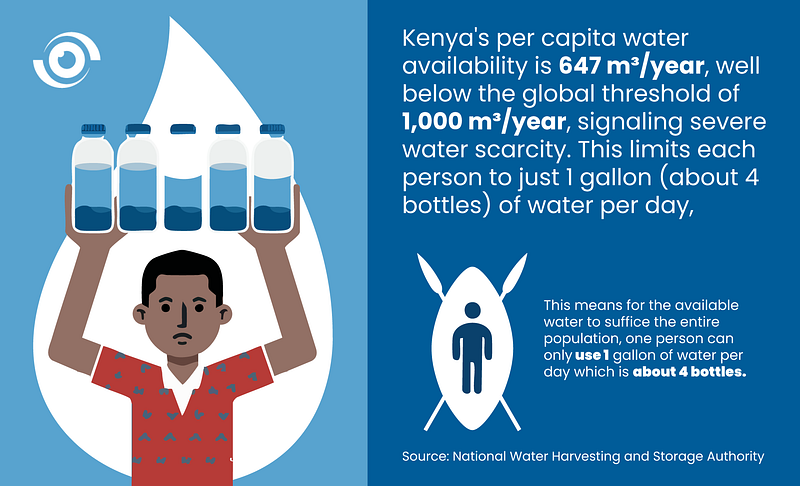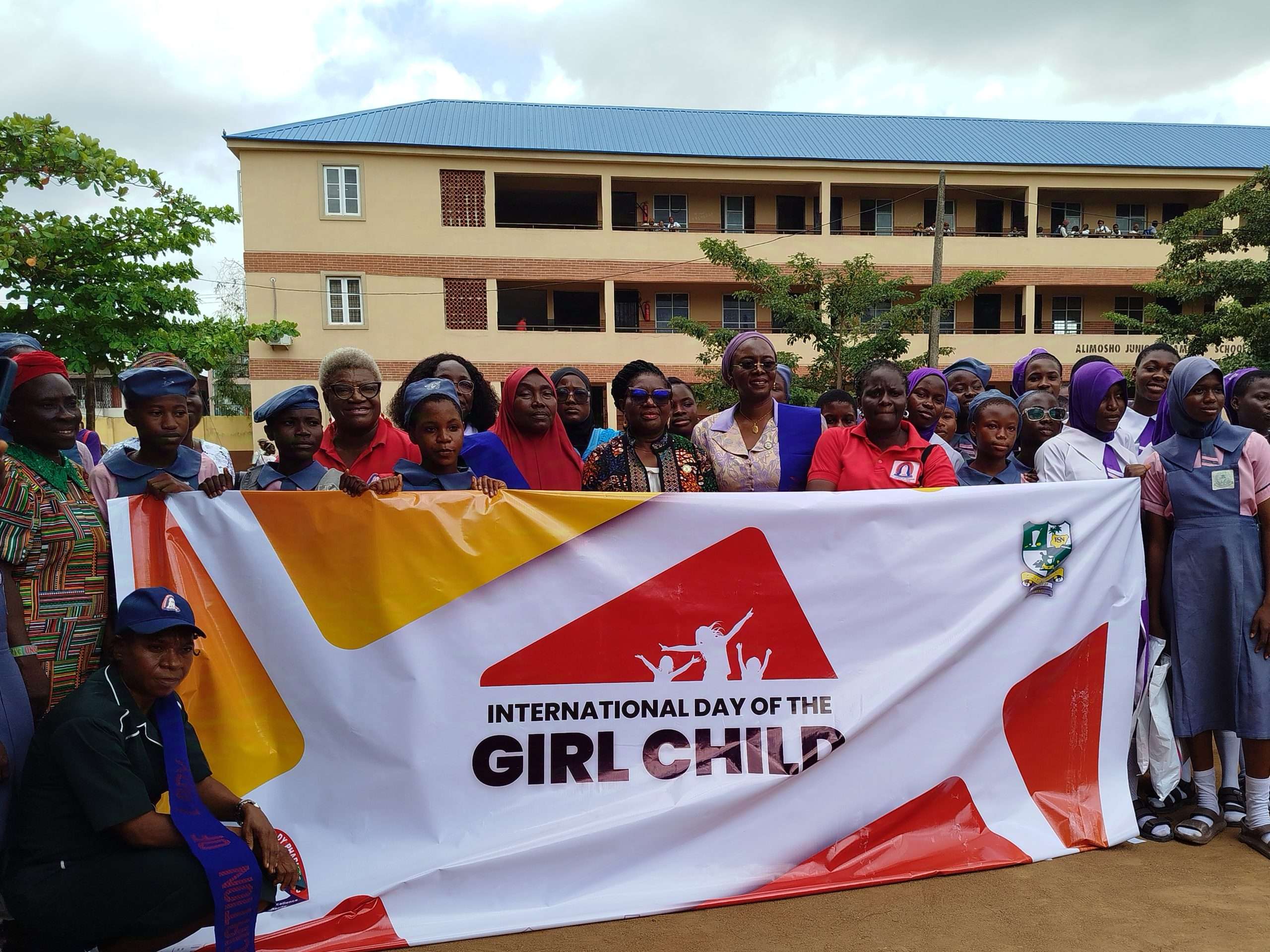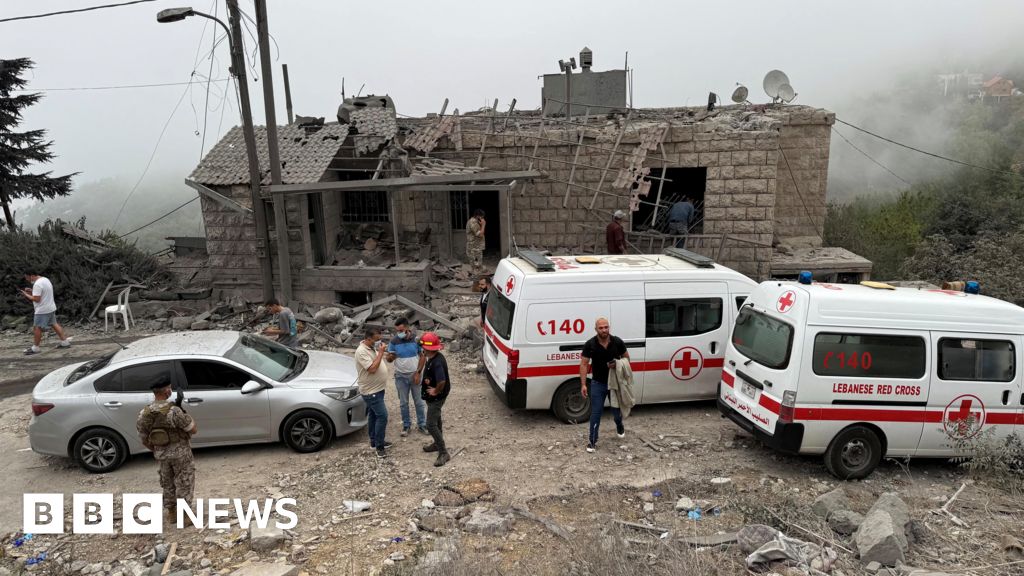Place your adverts here on InfoDig @ low rates; banner ads, sponsored links and guest articles etc. Contact us
Jackson Okata (Lead Writer)
In Kenya’s Kajiado West, Thomas Sankale, 60, endures the relentless heat while walking over three kilometres to water his cattle herd. This is a vital task he must complete daily to ensure his herd is not affected by the harsh temperatures and parched landscape of Nkaimurunya village, located 80 kilometres from the capital city, Nairobi.
Kajiado West, a semi-arid region, relies heavily on pastoralism as Sankale’s 150-cattle herd exemplifies it, “cattle rearing is a significant aspect of our social and economic life,” he explains. However, a prolonged drought in 2022 devastated his livestock, claiming 100 of his cattle due to scarce pasture and water. Nationally, Kenya’s State Department of Livestock reported 2.6million livestock losses in arid and semi-arid areas, including Kajiado.
Beyond its impact on livestock, the scarcity of clean water in water pans, swamps, and dams severely affects human health. The shared use of these water sources by humans and livestock facilitates contamination, leading to the spread of waterborne diseases that can devastate communities. According to John Nasieku, one of the community leaders in the region, drinking water was as precious as finding gold. “ The little available was contaminated, but we had no option.”
 Image credit: Nigeria Health Watch
Image credit: Nigeria Health WatchHowever, in 2023, the community decided to address the burden of waterborne diseases by adopting sand dams — a rainwater harvesting and conservation method. Sand dams are innovative, affordable water management systems built across seasonal sandy rivers. Comprising reinforced rubble cement walls, they conserve rainwater, recharge groundwater, and provide long-term water security in arid environments.
How sand dams work
Sand dams are constructed by positioning one or two long concrete barriers across riverbeds, with a pipe installed underneath. During rainfall, sand is carried downstream and deposited against the barrier, gradually filling the area behind it.
At the end of a rainy season, water remains trapped in the accumulated sand, slowly draining into the pipe for collection via a hand pump or digging into the dam’s base.
According to the United Nations Framework Convention on Climate Change (UNFCCC), sand dams play a vital role in climate change adaptation, ensuring year-round water access for communities and livestock. Sand dams also foster income generation by providing water for gardens, nurseries, orchards, and fisheries.
Kenneth Omolo, Project Officer at the Africa Sand Dam Foundation, also explained that wet sand can retain water for a year. Unlike ordinary earth dams, sand dams boast extended water storage capabilities. In Kajiado, Omolo notes that earth dams and boreholes typically dry up within two to three months, with water often becoming unsuitable for drinking due to high salt levels.
Sand dams also help reduce water collection time, allowing community members to focus on education or income-boosting activities. This makes sand dams a lifeline for poor communities and a key to food security.
‘Sand dams have been a real saviour’
Rural Kajiado’s chronic water scarcity once led to rampant waterborne illnesses. Nasieku remembers the gruelling 20-kilometer journeys he had to embark on to find relatively cleaner water at the time. But since the arrival of sand dams, this struggle for water has changed. “These sand dams have been a real saviour. We now have water for domestic use, and our animals are closer to our homes,” he says.
 Residents of Nkaimurunya village in Kajiado, Kenya construct a sand dam. Sand dams are masonry structures constructed across seasonal rivers to hold and store water in the sand. Image credit: Africa Sand Dam Foundation
Residents of Nkaimurunya village in Kajiado, Kenya construct a sand dam. Sand dams are masonry structures constructed across seasonal rivers to hold and store water in the sand. Image credit: Africa Sand Dam FoundationNasieku recounted the origins of their sand dam project, tracing it back to a community trip to Namibia. Inspired by the concept, they returned home and constructed a pilot sand dam to test its effectiveness. Encouraged by the results, they expanded the initiative across the villages. “Residents mobilised manpower to put up sand dams. One sand dam costs an estimated $2,000 to build while drilling a single borehole costs nearly $30,000,” he says.
Currently, three sand dams serve 600 households and cattle herds in Nkaimurunya village, transforming the community’s water landscape.
For Grace Naserian, 45, access to sand dam water has significantly reduced hospital visits for her children, who were previously plagued by waterborne illnesses. “We used to share water points with our animals. The water was dirty and untreated, which caused us unending health problems,” the mother of five stated. “For every hospital trip, I would spend Ksh800 [$8] to cover transport and treatment costs. Since I started using water from the sand dam, water-borne infections have been long gone,” she added.
Sarah Sutek, another resident, recalls the struggles of dry seasons, where humans and animals compete for scarce water. “We would trek 8 kilometres daily for dirty, untreated water.” In 2021, Sarah spent two weeks in hospital after being diagnosed with typhoid.
Moses Orundu, a public health officer at Loitoktok Hospital in Kajiado County, notes that women, the elderly, and children were disproportionately affected by water scarcity before the sand dam implementation. According to him, 40% of adult admissions and 50% of child admissions were due to water-related infections.
 Image credit: Nigeria Health Watch
Image credit: Nigeria Health WatchThe health officer noted that the hospital previously had a dedicated ward for treating typhoid and cholera patients just two years ago. Orundu said “one given time, the 30-bed capacity ward was half full of patients, but that has since changed. We hardly receive any of these cases.”
In 2022, Kajiado County recorded a total of 6,000 outpatient and 362 inpatient diarrhoea cases with 6.3% of them ending in fatalities, according to Alex Kilowua, County Minister in charge of health. Kilowua confirmed that 80% of the cases were caused by use of contaminated water. He also stated that there has been a 95% decline in waterborne infections in the county since the introduction of sand dam water harvesting.
Menstrual hygiene improves in Kajiado
Lack of access to clean water significantly exacerbates menstrual hygiene challenges. Insufficient water for bathing, washing hands, and cleaning menstrual products increases the risk of urinary tract infections, reproductive tract infections, and other health issues.
Josephine Sankaire, a community women leader, praises sand dams for significantly improving menstrual hygiene among women and girls in the village, “with no water, women and girls would not maintain proper hygiene during the monthly periods, and this kept women out of work and girls out of school. We were also exposed to sanitation-related infections,” Sankaire noted, adding that, “sand dams have saved us from long-distance walks in search of water. We no longer worry about back pains like before, and our women can stay clean and comfortable during their menstrual days.”
Improving sanitation hygiene
Under Grace Saitoti’s leadership as Kajiado County’s Chief Water Officer, sand dams are being transformed into comprehensive wellness hubs. Each dam now includes a Water, Sanitation, and Hygiene (WASH) training program, tackling local health issues rooted in inadequate cleanliness and promoting overall community well-being.
“After the community constructs the sand dam, the county government comes in to help them build a sanitation block and offer WASH training to help them not only manage the water well but also use it to enhance hygiene standards,” Saitoti explains.
 A sand dam filled with water in Nkaimurunya village in Kajiado, Kenya. Residents use the water for domestic use and irrigation. Image credit: Africa Sand Dam Foundation
A sand dam filled with water in Nkaimurunya village in Kajiado, Kenya. Residents use the water for domestic use and irrigation. Image credit: Africa Sand Dam FoundationOnly 26% of the rural population in Kajiado has access to toilet facilities, and the WASH component of the sand dams project has greatly improved the situation. Each sand dam comes with a WASH facility. Authorities predict that by 2030, all rural villages in Kenya will have access to improved water and toilets.
The success of the sand dams in Nkaimurunya has sparked hope beyond the village’s borders. The Kenyan government and various organisations are now looking to expand the highly successful sand dam initiative to other arid and semi-arid regions, bringing life-changing benefits to even more communitie
The biggest limitation of sand dams is prolonged drought spells which affect water levels in rivers
“When rains disappear for longer periods, the water levels in the rivers subside which means the sand dam waters also diminish rapidly’’ said Sankaire










)




 English (US) ·
English (US) ·